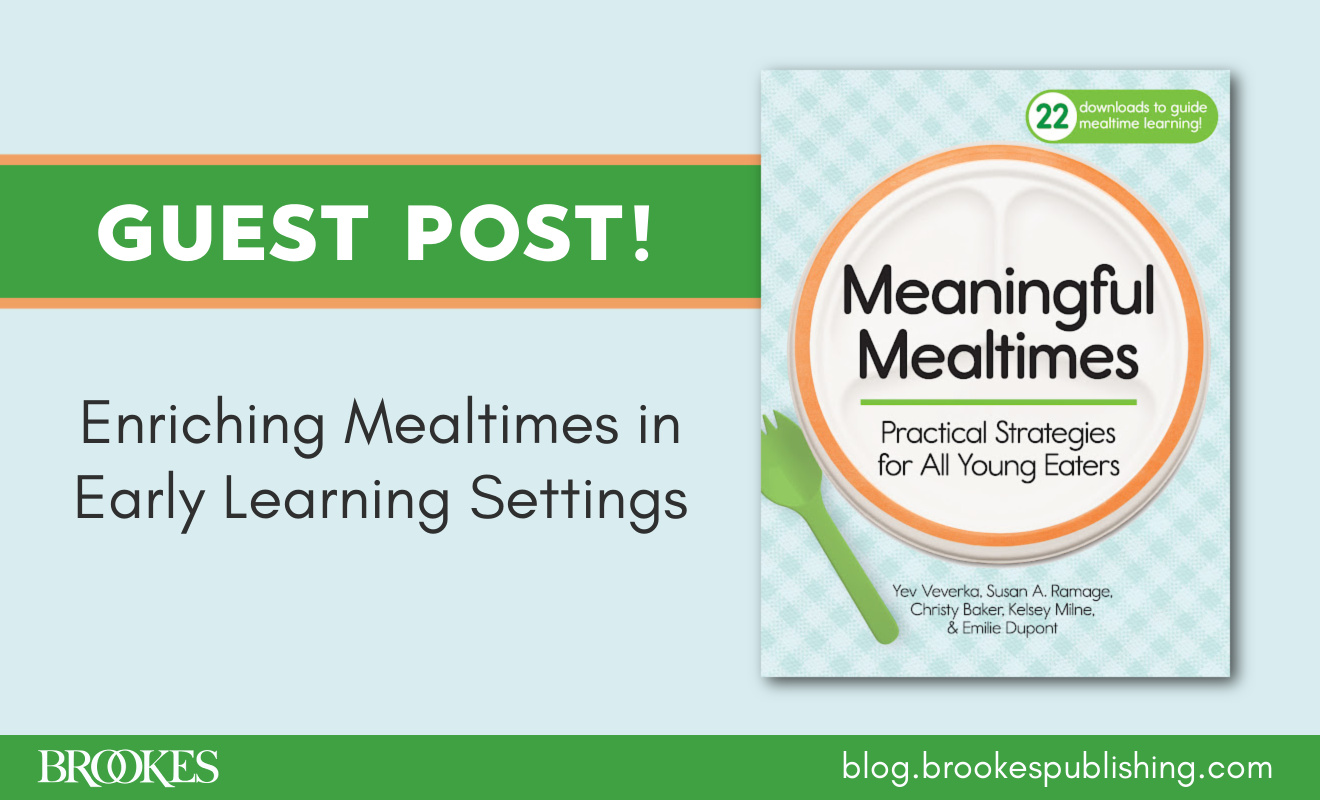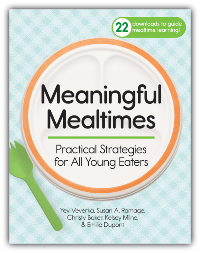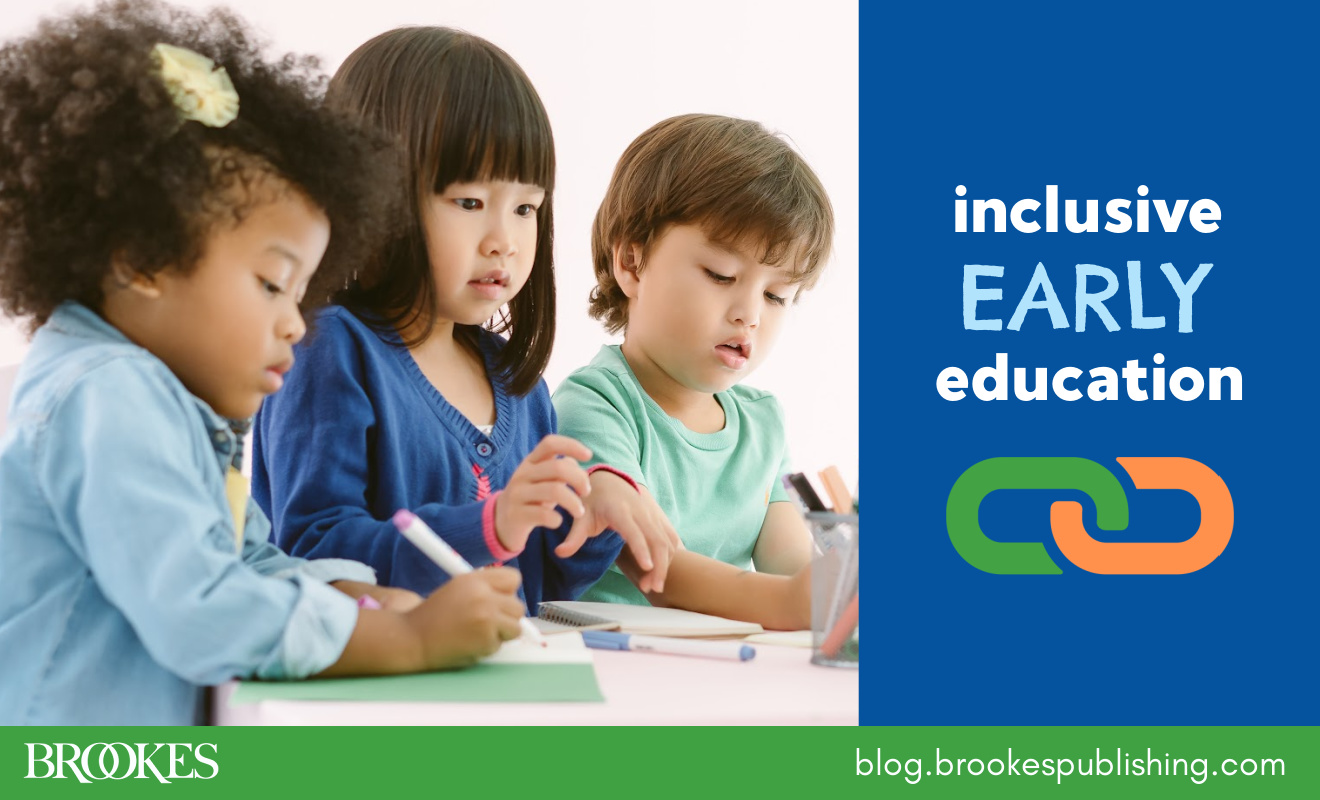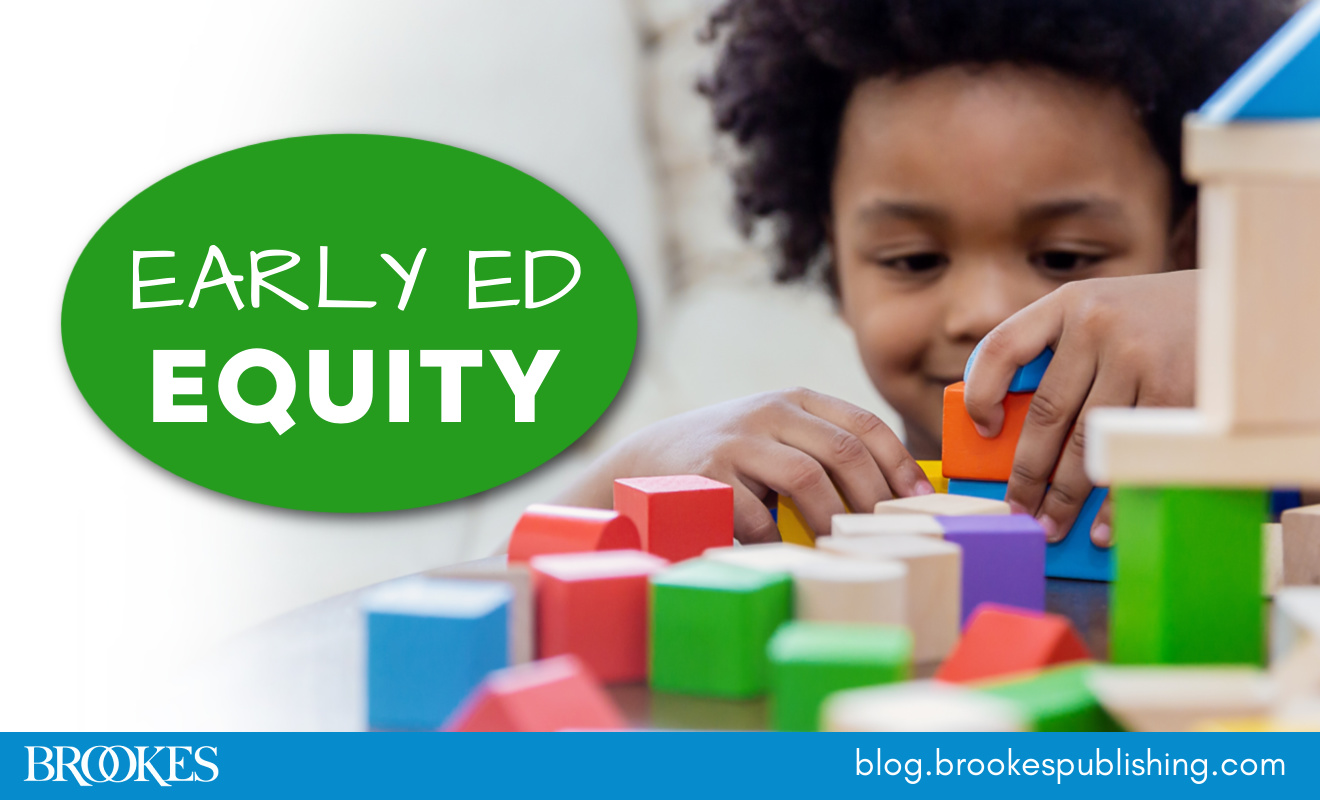9 Practices for Enriching Mealtimes in Early Learning Settings
September 5, 2024
 *Today’s guest blog post is by the authors of the practical new book Meaningful Mealtimes—Yev Veverka, Ph.D., BCBA-D, Susan A. Ramage, R.N., M.N., Christy Baker, OTR/L, CLE, Kelsey Milne, M.S., & Emilie Dupont, M.Ed.
*Today’s guest blog post is by the authors of the practical new book Meaningful Mealtimes—Yev Veverka, Ph.D., BCBA-D, Susan A. Ramage, R.N., M.N., Christy Baker, OTR/L, CLE, Kelsey Milne, M.S., & Emilie Dupont, M.Ed.
Mealtimes are a great opportunity to foster social connections, teach new skills, and introduce children to a variety of foods. However, creating a positive mealtime experience isn’t always easy, especially in early learning settings. Here are some strategies you can use to help enrich mealtimes and make them more enjoyable for everyone involved:
1. Self-Reflect
You bring your own mealtime history and values to your experiences with young children. Reflecting on your own history can help you understand how it influences the expectations or hopes you have for mealtimes in your setting. Ask yourself:
- “What do I remember about my own childhood mealtimes?”
- “What were the rules and expectations?”
- “How did we interact during meals?”
- “How did mealtimes make me feel?”
Maybe you’ll realize you prefer keeping mealtime neat and tidy because a mess feels overwhelming to you. Or maybe you’ll realize a noisy mealtime feels fun to you because you grew up with a big family gathering for mealtimes. When you become aware of your own mealtime expectations and values, you can more clearly evaluate how they match or don’t match the needs of children in your group. Compare notes with other adults in your setting to understand their unique histories and expectations, too. You can thoughtfully develop supportive, inclusive mealtime expectations that reflect the needs, values, and histories of your group.
2. Develop a Mealtime Vision that Reflects Providers, Families, and Children
Creating a shared mealtime vision can be meaningful for providers, families, and children. Your ideal vision for what meals look like can reflect the collective goals and values of everyone involved, ensuring that mealtimes are safe, positive, and fulfilling for all. To develop your vision, answer the question What defines a safe, positive, fulfilling mealtime?
You’ll have your own unique answers for this question, and other providers, family members, and children will, too. Talk with providers and families to learn how they define a positive mealtime. How do they want children to approach food, and what do they want them to learn? Observe the children in your group. What makes them feel safe during mealtime? What makes them feel interested and engaged in exploring foods?
For example, if caregivers express the importance of eating together as a family, you and your team might incorporate “eating together” into your mealtime vision. You might offer different seating options so all children feel comfortable and included, and begin meals by greeting each child to emphasize togetherness and connection. For a few children who consistently leave the group, you might add individualized supports related to each child’s interests to encourage participation.
3. Create a Calm, Supportive Environment
Set up a mealtime environment that is calm and comfortable, well-organized, and with minimal distractions. Your eating area can help children feel calm and regulated, and support them in shifting their attention from other activities to the mealtime experience. When setting up the space where you’ll eat meals, consider how to define the space so that children know it’s time to eat. You might use placemats made by the children to help them know where to sit, or put a plate at each child’s spot. To limit sensory distractions and create a calming environment, scan your setting for lights that can be dimmed or covered, noises that can be turned down, and distractions that can be removed.
4. Build Clear Structure and Routines
Establish consistent mealtime routines to provide structure and predictability. This helps children know what to expect, reducing anxiety and creating a more stable, enjoyable experience. When children know what to expect during the mealtime routine, they may also participate with more confidence and independence.
To establish a routine, think about starting and ending your meal in the same way each day. Your “beginning the meal” routine might include singing a song, washing hands, setting the table, and/or turning down the lights. At the end of the meal, children might clean up their dishes, dispose of trash or compost, and wash their hands before the next activity.
5. Reduce Pressure on Children
Avoid pressuring children to eat certain foods or specific amounts. Offer various choices when possible and allow children to decide what and how much to eat. This approach helps children feel more comfortable and in control during mealtimes. It also helps them learn to pay attention and eat in response to their own bodies’ signals of hunger or thirst.
Instead of insisting that a child just try a bite of a food, you may simply model different ways to interact with it that don’t require eating it, such as passing the bowl to a teacher or friend, helping to cut the food, or smelling it. Describing a food’s properties (shape, color, texture, smell, taste) may spark interest in exploring the food by looking, smelling, tasting, or touching with utensils or fingers.
6. Observe Carefully and Teach Children to Communicate Their Preferences
For children to feel safe and respected during mealtimes, they need to know that they can express preferences and needs, and that adults will notice and honor their communication. Children express mealtime preferences in many ways: through facial expressions, body language, gestures, or spoken words. During mealtimes, watch and listen carefully to understand what children are showing and telling you about their preferences and needs.
Model a variety of ways to communicate. For example, model simple words that seem to “match” the messages children communicate with their bodies (like “no thanks” as a child turns their head away from a food). You might hold two different foods in front of a child so they can choose one by looking, reaching, or pointing at it. You might introduce a system of gestures where children can provide a thumbs up, thumbs to the side, or thumbs down to share preferences about a food. You could even sketch drawings of different foods so a child can choose by pointing to the one they want.
7. Celebrate Diversity
Embrace and celebrate the diversity of food cultures and practices in your program. Talk with families and provide opportunities for them to share information about their special foods, experiences with food preparation, or mealtime traditions (if they wish). Introduce children to various foods from different environments and communities. This fosters inclusivity and broadens children’s understanding of different cultures.
Be mindful that some families may have difficult food experiences, like food insecurity or health conditions that affect eating. Take care to create invitations for children and families to share their mealtime experience, without requiring it.
You can also include books or pictures in your classroom library that feature foods from many cultures. This allows you to help children explore more about new foods, where they come from, what the ingredients are, and how you might use them in a recipe. It also helps children learn new ways to react to foods and communicate what they’re feeling about those foods with openness and respect.
8. Provide Opportunities for Learning
Notice and take advantage of learning opportunities within mealtime. Expand your conversations around food. Discuss where different foods come from, how they grow, their nutritional benefits, who harvests them, and how they’re prepared and used by different cultures. Talk about how food makes its way through the body and different ways people get the nutrition they need, like eating by mouth or using a G-tube. Look at pictures of these concepts or act them out to make the ideas come alive. This approach can make mealtimes more interesting and informative, enhancing children’s appreciation for food and extending their knowledge about the world around them.
9. Build Motivation Through Repeated Positive Experiences
Repeated positive mealtime experiences help build intrinsic motivation, making children more likely to engage with and enjoy mealtimes. Infuse mealtimes with fun and creativity. Engage children in food-related activities—storytelling, themed meals, cooking projects. Making mealtimes enjoyable can alleviate stress and make the experience more engaging for everyone.
For a child who isn’t comfortable sitting at the table for a meal, it can be helpful to include a favorite toy to make them more interested in being at mealtime (extrinsic motivation). After the child grows more comfortable at the table with their toy, gradually introduce foods the child likes. This can lead to the child beginning to try foods and enjoy peer interactions, and then to the child wanting to participate in mealtimes without the toy (intrinsic motivation).
Including these practices in early learning settings can transform mealtimes into enriching experiences that promote positive relationships with food, support social development, and enhance children’s well-being. By creating a supportive environment, respecting individual preferences, and using mealtimes as opportunities for learning, early learning providers can help children build a foundation of positive, comfortable associations with food and mealtime that may last a lifetime.
For much more practical guidance on making mealtimes fulfilling and meaningful experiences for all young children, get this user-friendly new planning guide, the first of its kind for early childhood educators and care providers!




Write a Comment
Your email address will not be published. Required fields are marked *
Post a Comment